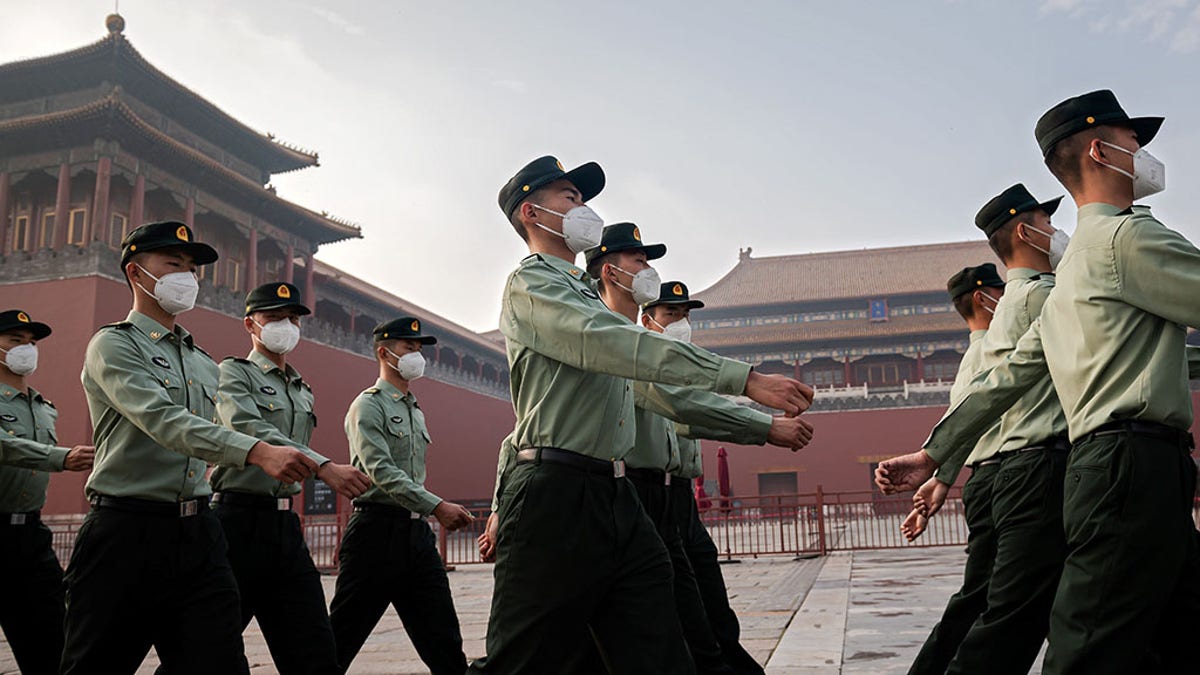China reportedly working on 'brain control weapons'
Fox News national security correspondent Jennifer Griffin discusses a report alleging China is developing ‘brain control weapons’ on 'Fox Report.'
Reports from India claim that China has started to deploy armed robotic vehicles to handle the altitude and terrain that has proven too difficult for its troops.
China and India clashed in Sept. 2020 during a border dispute along the southern coast of Pangong Lake in an area known in China as Shenpaoshan and in India as Chushul, but the armies continued their standoff along the two nations' borders throughout 2021. China has now reportedly deployed unmanned ground vehicles (UGV) to the region of Tibet to strengthen its position.

People's Liberation Army (PLA) soldiers march next to the entrance to the Forbidden City during the opening ceremony of the Chinese People's Political Consultative Conference (CPPCC) in Beijing on May 21, 2020. - China's biggest political event of the year, the National People's Congress (NPC), opens on May 22 after months of delay over coronavirus fears, with President Xi Jinping determined to project strength and control over the outbreak despite international criticism and a wounded economy. (Photo by NICOLAS ASFOURI / AFP) (Photo by NICOLAS ASFOURI/AFP via Getty Images) (Getty Images)
The People’s Liberation Army (PLA) acquired the vehicles – known as the Sharp Claw and the Mule-200 – as early as 2014, but they have not seen much deployment until now. The Chinese military has deployed around 120-300 Mules to Tibet, the majority of them stationed near the border, WION News reported.
HONG KONG COURT DENIES BAIL TO PRO-DEMOCRACY EDITORS CHARGED WITH SEDITION
Operators can control the Claw wirelessly, but it can also move on its own, according to National Interest. The Mule can serve as either an unmanned delivery truck or utilize weapons, such as mounted guns.
The PLA has deployed around 88 Sharp Claws into Tibet, with 38 of them in the western part of the province close to where the Indian and Chinese armies maintain a standoff, Times Now News reported.
CHINA CRACKS DOWN ON NATIONAL SOCCER PLAYERS HAVING TATTOOS TO ‘SET A GOOD EXAMPLE FOR SOCIETY’
The region in which the vehicles may have deployed is described as exceedingly arid, remote, and largely inhospitable. The area mainly serves as access for a few commerce routes to cross the desert.
The PLA has also deployed the VP-22 Mine Resistant Ambush Protected Vehicle, which can help move troops through the difficult terrain or serve as an ambulance. Most of the 70 units reportedly deployed to Tibet have also focused in the western sector.
BLINKEN SPEAKS OUT AFTER HONG KONG PRO-DEMOCRACY MEDIA OUTLET SHUT DOWN
Human Rights Watch, Amnesty International, and Harvard Law School’s International Human Rights Clinic have called on world governments to halt the development of war robots for almost a decade, but efforts continue.
Tech company Zhong Tian Zhu Kong Technology Holdings developed the Mule, which has a range of roughly 31 miles (50 km)and can carry up to 440 pounds (200 kg) of ammunition, supplies or weapons.
CLICK HERE TO GET THE FOX NEWS APP
Chinese Defense Company NORINCO (China North Industries Corporation) developed the Sharp Claw for reconnaissance and limited engagements. The operator wears a small control unit to utilize the vehicle, Army Recognition reported.

